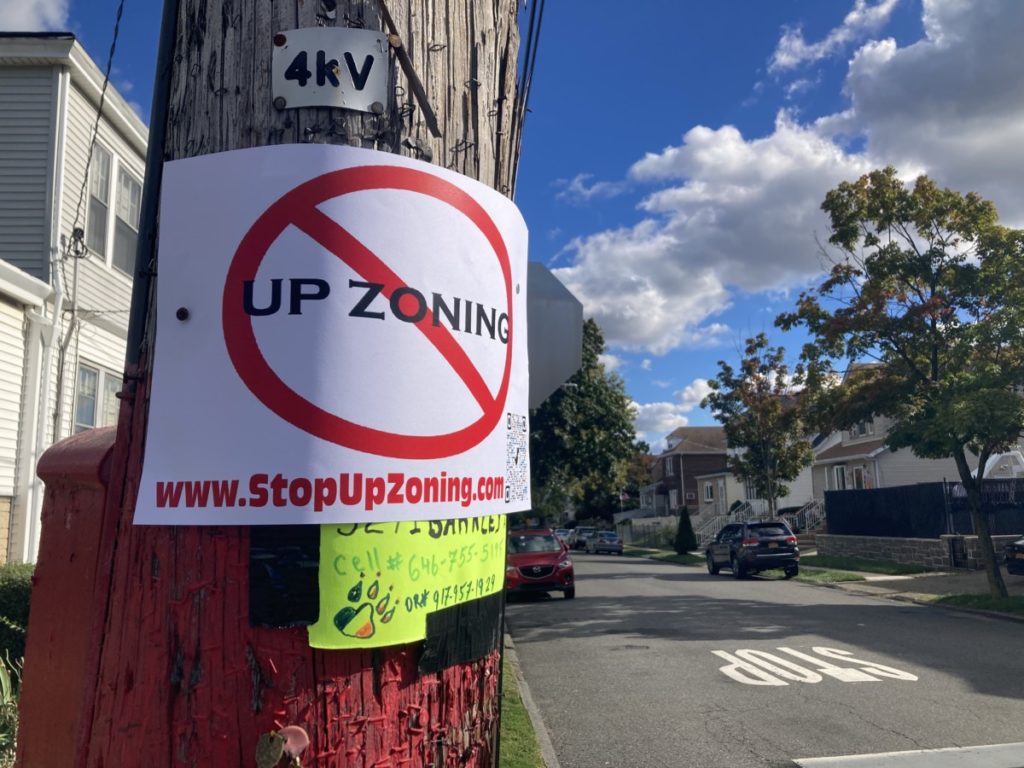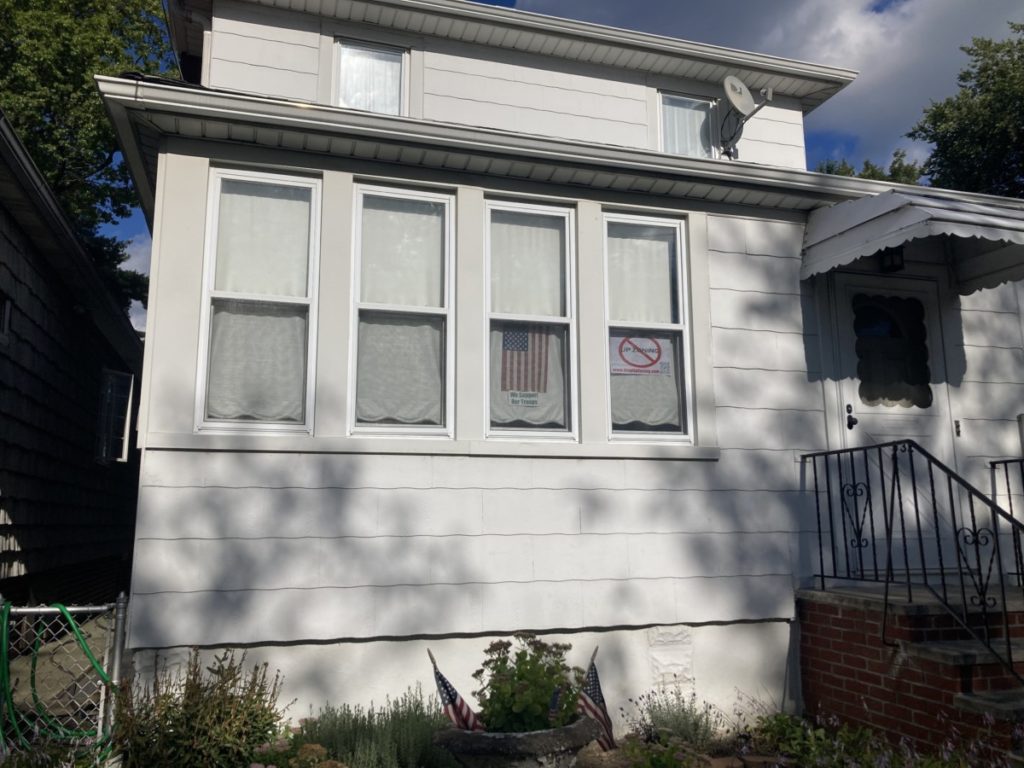
Compared to the fast-paced, chaotic borough of Manhattan, Throggs Neck sticks out as an almost suburban neighborhood. Located in the southeastern corner of the Bronx, it’s made up of mostly single, free-standing homes. It can be hard to remember it exists within the boundaries of New York City until making the mile trek to the closest train station at Pelham Bay.
“It’s mostly a working-class, middle-class community that appreciates urban living but not congested urban living,” said Janine Franciosa, a Throggs Neck resident who has lived in the neighborhood all 40 years of her life.
Currently, some Throggs Neck residents like Franciosa are worried that’s about to change.
A for-profit developer, Throggs Neck Associates LLC, is seeking to build four multi-story buildings across Bruckner Boulevard, some of which will include affordable housing units. But to do so, they first have to change long-standing low-zoning laws which are designed to prevent larger developments from being built.
The debate has stirred things in the community, with some residents battling to maintain the zoning laws in an effort to “preserve” the neighborhood and others rallying in support of the project if it means more affordable housing units for residents in need.
Those in support include Bronx Borough President Vanessa Gibson and Mayor Eric Adams.
“Housing construction has not kept up with population growth in New York City,” explained Brendan Cheney, Director of Policy and Communications at New York Housing Conference, an affordable housing policy advocacy group.
“New York City is constrained in terms of vacant land. It is expensive to build here in the city. There are also zoning restrictions that can prevent growth,” he added.
According to NYC planning, Throggs Neck is currently designated as a low-density district, meaning there is a restricted number of residential units allowed on one zoning lot. The majority of residential buildings also have height limitations. In 2004, residents in the area amended the zoning to include more restrictions after raising concerns about over-development.
These zoning laws have prompted Throggs Neck Associates LLC to ask for a rezone of the area in order to build their project, which includes a 3-story building, a 5-story building, and two 8-story buildings.
According to the developer’s proposal, the four buildings will have a total of 349 residential units, 168 of those units will be reserved for low-income residents, 99 units primarily for seniors, and 22 units reserved for veterans whose rents will be paid by Tunnel to Towers, a non-profit organization.
Around 46 percent of Throggs Neck residents are renters—nearly half of those renters are considered rent burdened, according to the US census report.
At the end of last year, more than 900 households in the 13th Council District, which includes Throggs Neck, ended up in homeless shelters, according to Cheney.
“So you’ve got people who are rent burdened, you’ve got people who are living in poverty in the council district, you’ve got people whose housing crisis is so severe in the neighborhood that they’re needing to enter shelter,” Cheney said.
“That neighborhood should be looking for ways to get more affordable housing in the neighborhood instead of rejecting affordable housing coming into the neighborhood.”
In May of 2022, when the proposal was introduced to Community Board 10, it was voted down with a near unanimous vote, Matthew Cruz, Bronx Community District 10 Manager told The Bronx Ink.
“This is a rezoning that is far too expansive for our taste,” Cruz said. “In short, and to be kind, there was no planning behind this rezoning application and I think that’s why the community board and much of the community remains opposed.”
Like Cruz, many residents are skeptical of the developers’ long-term plans within the neighborhood.
“I think it is an opportunistic endeavor for a small number of developers that are kind of exploiting the situation of this community,” Franciosa said.“It’s setting precedence for any developer to come and over-develop and…exploit what they can do in this area for their own personal financial gain.”
According to NYC Planning, Bronx Community District 10 is one of just four in New York City’s 59 community districts that are labeled as “lower density growth management”. This means certain rules are in place, such as parking and yard/open space requirements, to help manage growth.
“This is the last neighborhood of its kind because so many other neighborhoods have been exploited with over-development,” Franciosa said. “People should feel agency where they live. People should have a say in how they want to live.”

Open New York, an affordable housing advocacy group, has been involved in the zoning proposal since it was introduced and has advocated to see it through.
“This is a community that’s been able to draw a line around itself and say, ‘no, you have to build everywhere but here.’ And that’s not fair to the rest of the city,” said Logan Phares, Political Director of Open New York.
Over the last eight years, Council District 13 has added just 58 affordable housing units, ranking fifth lowest across all New York City council districts, according to data compiled by NYHC. Over the same course of time, City Council District 17, also located in The Bronx, topped the list, with 8,555 affordable units built.
Michael Kaess, a resident in Council District 13 and a member of Open New York, is one of a few residents voicing support for the project.
“It’s time that communities like mine build their fair share. I really think it has a city-wide implication whether something like the Bruckner Site rezoning passes,” Kaess said.
As of 2019, in the New York Metro area, there are only 47 affordable and available rental units per 100 very low income households, according to data provided by National Low Income Housing Coalition. To be considered very low income, that household must make at or below 50% of the area median income, for a family of three that is anything under $60,050. Currently the New York City Metro area is short 771,855 affordable units for very low income households.
Though Kaess is one of few residents supporting the project, he suggested that those who oppose don’t actually make up the majority of the neighborhood.
“I don’t think the average person is that engaged,” Kaess said. “The unfortunate reality is that the people who show up to every community board meeting, those are the folks that are going to be the most against it.”
At the end of August, members of Open New York attended a rally in support of the project. They were met with fierce opposition from community members, one even sprayed a hose towards them over the fence.
“These are folks who are so afraid of any change to the status quo that they will go to extreme lengths of hosing down supporters,” Phares said.
The Bronx Community Board 10 told The Bronx Ink it does not condone any threats made towards supporters.
“I think these conversations bring about some charged comments and things are said that are really unwanted and do not help the conversation,” Cruz said.“That’s not indicative of who we are as a community. We’re much better than that.”
The City Council has until October 17th to make a final decision on rezoning, according to New York’s URLUP process.
“I’m not going to say that a building going up is necessarily going to make me move,” Franciosa said. “It’s not just the building. It’s…what the implications will be.”

